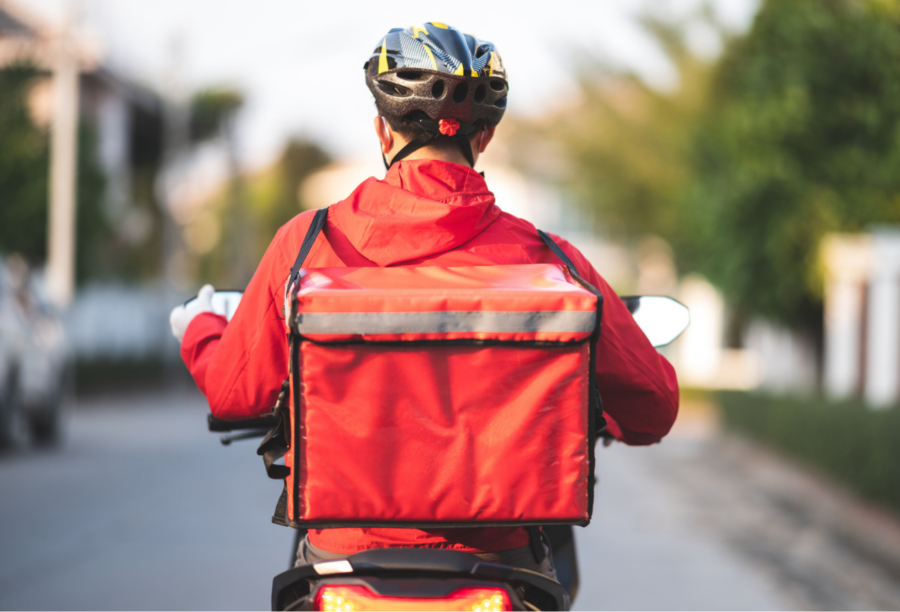Consumers love the convenience of DoorDash, Uber Eats, and other delivery services that bring their favorite restaurant meals right to the door. They willingly pay the added costs — sometimes as much as 40% — and hope the driver gets a fair share.
But the dollar-by-dollar breakdown of who gets what in those transactions is murky by design, according to a recent experiment by The Washington Post to figure out the financial formula of food delivery platforms.
“The opacity is a feature and not a bug of these systems,” Wharton management professor Lindsey Cameron said to the newspaper. She joined Wharton Business Daily on SiriusXM to talk about the story and why tipping has become such a thorny issue.
In its unscientific experiment, the newspaper staff purchased the same meal of chicken skewers and a side of fried plantains from a restaurant in San Francisco through DoorDash, Grubhub, and Uber Eats. They compared the total price of each delivery with the lower price of picking up the food directly from the restaurant. Then they worked to break down the payouts for the restaurant, the driver, and the delivery company, a task complicated by unspecified fees charged by the platforms.
What Is a Good DoorDash (Tip? It’s Hard to Say
“The question is, how do we have this single amount of money coming from the customer split up in a way that everybody gets enough of the pie? And what the Post article really highlights is everybody gets different slices,” Cameron said. “This leaves the question: Is it enough?”
Uber Eats offered the largest payout to the restaurant, while Grubhub paid its driver the most money. Cameron said it’s not about who gets the biggest slice, but whether the restaurant workers and app drivers are earning a fair wage. She pointed out that many platforms aren’t profitable, and their fees can take a big bite out of restaurant profits. Yet restaurant owners feel compelled to join the apps if they want to compete for diners, and they pay extra for preferred advertising to make their establishments pop first when an app user conducts a search.
Meanwhile, driver pay can vary widely based on platform, location, and whether the app batches orders for efficiency. The state of California, where the experiment was done, passed legislation requiring drivers to get 120% of minimum wage for their “engaged time,” so Uber Eats adds a fee to cover that cost, according to the newspaper.
“Many restaurants are really hurting. And drivers need to earn a fair wage,” Cameron said. “So, to the question about who should get the most, it’s more like who can get enough to cover their costs and then, hopefully, earn a profit. It seems like many of the individuals who are playing this in the app game aren’t getting enough to cover their costs.”
“Many restaurants are really hurting. And drivers need to earn a fair wage.”— Lindsey Cameron
She said one of the gems of the Post article is seeing how the platforms pay drivers. Although Uber Eats had the best rate for that single order, drivers can’t assume it will always be that way.
“All of this points to the opacity we see in this algorithmically managed work,” the professor said. “If you don’t know how the algorithm is making decisions — how it is batching orders, what rates it is setting — all of these things keep power in the hands of the platform companies, and drivers have less information to go on to make informed decisions.”
Greater Transparency Around Delivery Fees Is Needed
Cameron, who studies the gig economy, said The Washington Post article reveals just how difficult it can be for customers to figure out where their dollars are going. She said greater transparency is needed, especially around the service charges. When the newspaper asked questions about the fees, they got vague answers, and when they pressed further, the platforms conceded that the money flowed to them.
“You don’t know what [the service charge] is for. Is that going to the driver? Is it going to the restaurant? Is it going to the company?” Cameron said, noting that more restaurants are also adopting service fees as part of their billing. “We’re now getting to this new, murky ground that if a customer sees a service fee on a bill, are they actually going to tip that 15%, 20% that workers depend on to make their living wage, or are they going to think the tip is already covered by the service fee, which in most cases it is not?”
Cameron said she’s beginning to research how restaurants choose which platforms to engage with, whether they are exclusive, and how they deal with the extra work that comes with managing delivery software and prepping more meals for drivers to grab and go. She said third-party players are coming into the fray to help restaurants manage the increased activity, potentially adding another layer of cost.
Although there’s been much public discourse around the new rules of tipping, Cameron thinks most consumers aren’t really considering the allocation when they order on apps. The fairest allocation — not to mention the lowest price — happens when consumers pick up directly from the restaurant. But they crave the ease of delivery.
“The idea of doing restaurant pickup flies out of people’s minds nowadays, now that they’ve had the convenience,” she said. “Honestly, I don’t see most consumers really thinking about the breakdown of the money and who is getting what. They’re just looking for how they can get the cheapest option for food delivery.”



